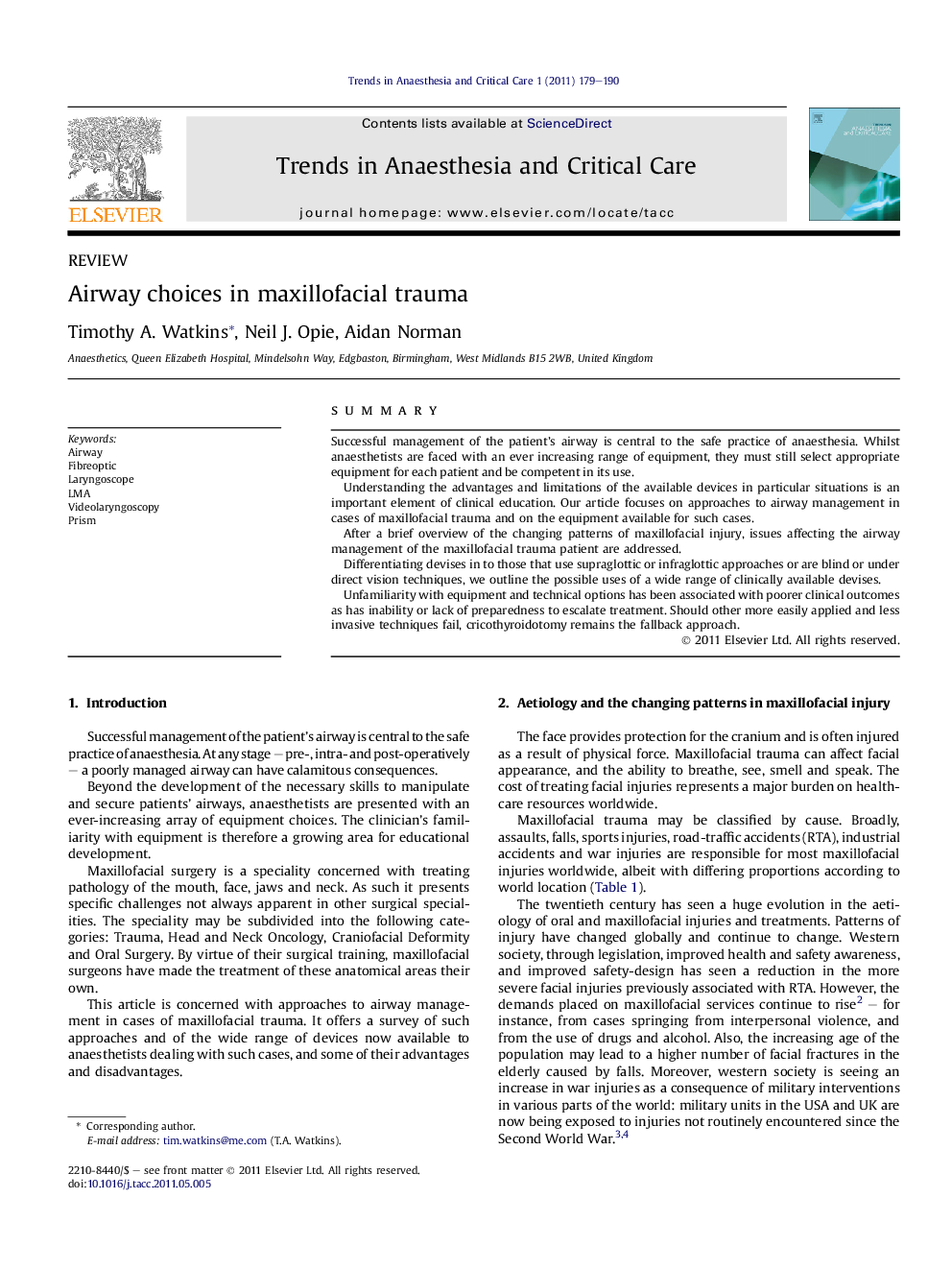| Article ID | Journal | Published Year | Pages | File Type |
|---|---|---|---|---|
| 2772661 | Trends in Anaesthesia and Critical Care | 2011 | 12 Pages |
SummarySuccessful management of the patient's airway is central to the safe practice of anaesthesia. Whilst anaesthetists are faced with an ever increasing range of equipment, they must still select appropriate equipment for each patient and be competent in its use.Understanding the advantages and limitations of the available devices in particular situations is an important element of clinical education. Our article focuses on approaches to airway management in cases of maxillofacial trauma and on the equipment available for such cases.After a brief overview of the changing patterns of maxillofacial injury, issues affecting the airway management of the maxillofacial trauma patient are addressed.Differentiating devises in to those that use supraglottic or infraglottic approaches or are blind or under direct vision techniques, we outline the possible uses of a wide range of clinically available devises.Unfamiliarity with equipment and technical options has been associated with poorer clinical outcomes as has inability or lack of preparedness to escalate treatment. Should other more easily applied and less invasive techniques fail, cricothyroidotomy remains the fallback approach.
